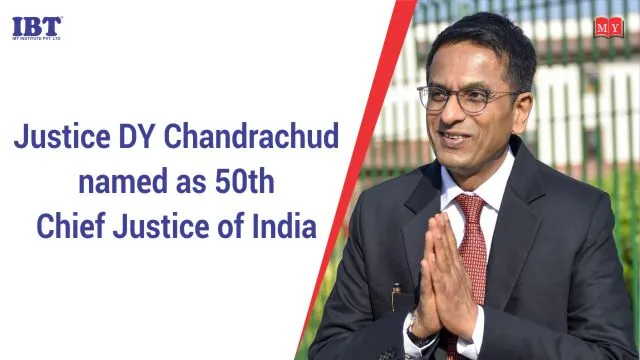
Justice DY Chandrachud named as 50th Chief Justice of India
Justice DY Chandrachud has been appointed as the 50th Chief Justice of India. Justice Chandrachud would be sworn in by President Droupadi Murmu as CJI on November 9, 2022. He will succeed Justice UU Lalit, who is serving a short tenure of just 74 days.
Chief Justice of India
The Chief Justice of India is the Chief Judge of the Supreme Court of India as well as the highest-ranking officer of the Indian Judiciary. The Constitution of India grants power to the president of India to appoint, in consultation with the outgoing chief justice, the next chief justice, who will serve until they reach the age of sixty-five or are removed by impeachment.
Eligibility
He/She is a citizen of India and. has been for at least five years a Judge of a High Court or of two or more such Courts in succession.
The Constitution does not specify a minimum age for nomination as a Supreme Court judge, but the maximum age is 65 years.
Responsibilities of Chief Justice of India
As head of the Supreme Court, the chief justice is responsible for the allocation of cases and appointment of constitutional benches which deal with important matters of law. In accordance with Article 145 of the Constitution of India and the Supreme Court Rules of Procedure of 1966, the chief justice allocates all work to the other judges who are bound to refer the matter back to them (for re-allocation) in any case where they require it to be looked into by a larger bench of more judges.
On the administrative side, the chief justice carries out functions of maintenance of the roster, the appointment of court officials, and general and miscellaneous matters relating to the supervision and functioning of the Supreme Court.
Appointment
As the incumbent chief justice approaches retirement, the Ministry of Law and Justice seeks a recommendation from the incumbent chief justice. Consultations with other judges might also take place. The recommendation is then presented to the prime minister, who passes the advice on to the president.
Removal
Article 124 of the Constitution of India lays down the procedure for the removal of a judge of the Supreme Court which is applicable to chief justices as well. Once appointed, the chief justice remains in office until the age of 65 years. There is no fixed tenure provided in the constitution.
 4.5/5
4.5/5








